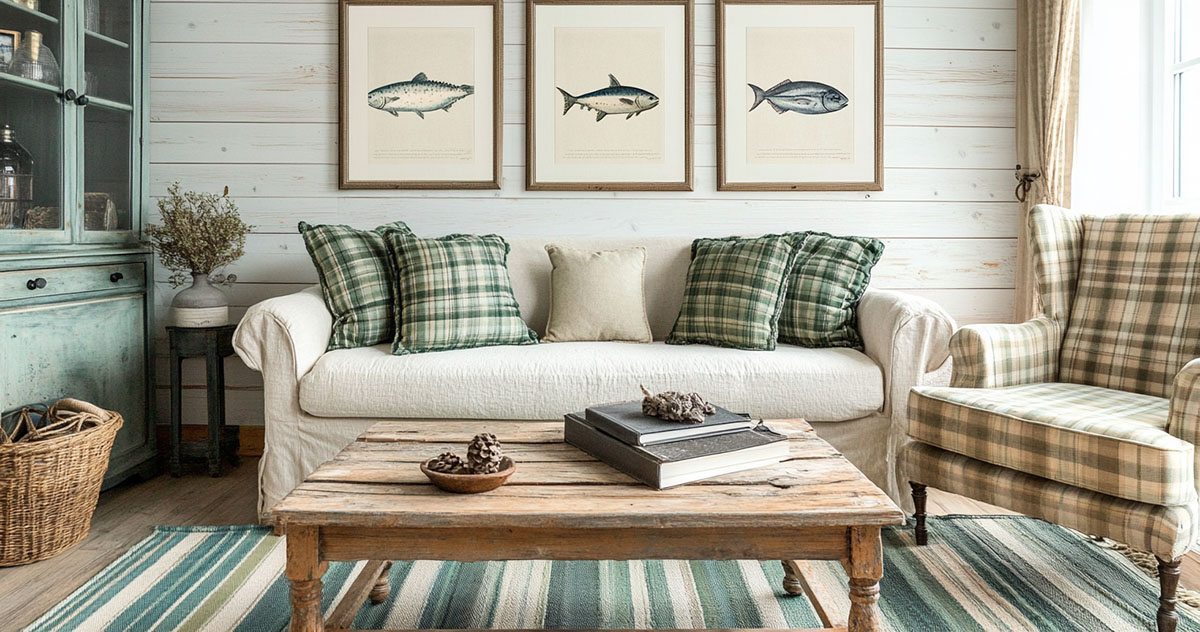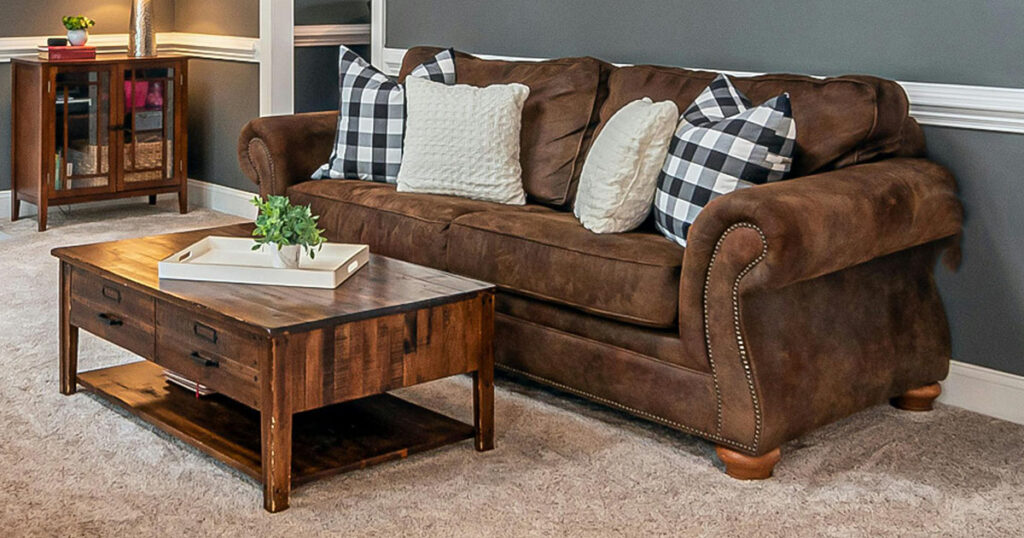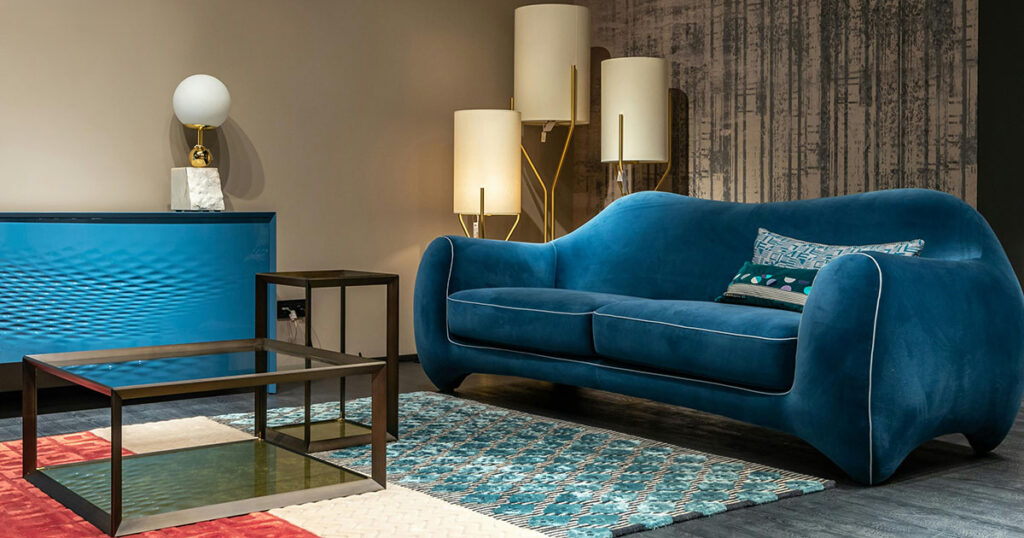Transform your home with stunning rugs that perfectly complement shabby chic interiors.
This post will guide you through selecting the ideal rug styles, sizes, and colors to enhance your space.
You’ll also discover tips on coordinating rugs with furniture and decor.
By the end, you’ll know exactly how to achieve that cozy, vintage look you desire.
Ready to elevate your shabby chic home with the perfect rug?
Let’s dive in.
Introduction
Shabby chic is a popular interior design style that combines vintage elements with a soft, feminine aesthetic.
This style creates a cozy and inviting atmosphere that feels both lived-in and elegant.
Rugs play a crucial role in pulling together the various elements of shabby chic decor, serving as a foundation for the room’s overall look and feel.
In this comprehensive guide, we’ll explore the world of shabby chic rugs, helping beginning buyers understand what to look for and how to incorporate these beautiful pieces into their homes.
What is Shabby Chic Style?
Shabby chic is an interior design style that embraces a vintage, worn, and soft aesthetic.
It is characterized by a mix of antique or distressed furniture, soft pastel colors, floral patterns, and delicate textures.
The overall goal is to create a space that feels comfortable, inviting, and nostalgic.
Key characteristics of shabby chic interiors include:
Soft, muted color palettes:
- Light pastels such as pale pink, sage green, and sky blue are common, along with neutral shades like white, cream, and beige.
Distressed and vintage elements:
- Furniture and decor items often feature a worn or aged appearance, achieved through techniques like painting, sanding, and distressing.
Floral and botanical patterns:
- Soft, feminine prints featuring flowers, leaves, and other natural motifs are a staple of shabby chic style.
Delicate textures:
- Lace, ruffles, and soft fabrics like cotton and linen contribute to the cozy and romantic feel of shabby chic spaces.
Mismatched and eclectic pieces:
- Shabby chic interiors often incorporate a mix of vintage and modern elements, creating a unique and personalized look.
By combining these elements, shabby chic interiors evoke a sense of warmth, comfort, and timeless beauty.
The style strikes a balance between the charm of the past and the comfort of the present, resulting in a space that feels both inviting and stylish.
The Importance of Rugs in Shabby Chic Decor
Rugs are an essential component of shabby chic interiors, serving several key functions:
Tying the room together
- A well-chosen rug can unify the various elements of a shabby chic room, creating a cohesive and harmonious look.
- By picking up colors and patterns from other decor items, a rug can help to pull the entire space together.
Serving as a focal point
- In some cases, a shabby chic rug can be the star of the room, drawing the eye and setting the tone for the entire space.
- A beautiful, vintage-inspired rug can serve as a conversation starter and a central design element.
Providing a foundation
- Rugs can also act as a neutral foundation for a shabby chic room, anchoring the furniture and decor.
- A soft, neutral-colored rug can provide a backdrop for more colorful or patterned elements, allowing them to shine.
Adding warmth and softness
- Shabby chic interiors are all about creating a cozy and inviting atmosphere.
- Rugs contribute to this by adding warmth and softness underfoot, making a space feel more comfortable and welcoming.
Defining spaces
- In open-concept homes or larger rooms, rugs can help to define different functional areas, such as seating or dining spaces.
- This is especially useful in shabby chic interiors, where a sense of intimacy and coziness is desired.
By understanding the important roles that rugs play in shabby chic decor, beginning buyers can make informed decisions when selecting the perfect rug for their space.
Whether serving as a focal point or a subtle foundation, a well-chosen shabby chic rug can elevate the entire room, creating a beautiful and inviting atmosphere.
Types of Rugs Suitable for Shabby Chic
When selecting a rug for a shabby chic interior, there are several types to consider, each contributing to the overall aesthetic in its own unique way:
Vintage and antique rugs
- Authentic vintage or antique rugs are a perfect fit for shabby chic interiors.
- These rugs often feature soft, faded colors and intricate patterns that lend a sense of history and charm to the space.
- Persian, Turkish, and Oriental rugs are popular choices, as they offer a timeless beauty that complements the shabby chic style.
Floral and botanical prints
- Rugs featuring soft, feminine floral patterns or botanical designs are a staple of shabby chic decor.
- These prints can range from delicate and understated to bold and colorful, depending on the desired look.
- Floral rugs can serve as a focal point in a room or blend seamlessly with other patterned elements.
Distressed and faded styles
- Rugs with a distressed or faded appearance are perfect for shabby chic interiors.
- These rugs may feature intentional signs of wear, such as faded colors, frayed edges, or subtle imperfections.
- This aged look contributes to the overall vintage and lived-in feel of the space.
Neutral and pastel colored rugs
- Soft, muted colors are a hallmark of shabby chic style, and rugs in these hues can provide a versatile foundation for the room.
- Neutral shades like beige, cream, and gray, as well as light pastels like blush pink, sage green, and powder blue, are all excellent choices for shabby chic rugs.
Natural fiber rugs
- Rugs made from natural fibers such as jute, sisal, and cotton can add a rustic, organic touch to shabby chic interiors.
- These rugs often feature a chunky, textured weave that adds visual interest and a sense of warmth to the space.
- Natural fiber rugs can also serve as a neutral base for layering with other, more decorative rugs.
When choosing a rug for a shabby chic room, consider the overall color palette, existing patterns, and desired level of vintage charm.
By selecting a rug that complements the other elements in the space, beginners can create a cohesive and inviting shabby chic interior.
Materials and Construction of Shabby Chic Rugs
Shabby chic rugs can be made from a variety of materials, each with its own unique characteristics and benefits.
Some common materials include:
Wool
- Wool is a popular choice for shabby chic rugs due to its durability, softness, and ability to hold color.
- Wool rugs can be found in a wide range of styles, from hand-knotted vintage pieces to more modern, tufted options.
- They are naturally stain-resistant and can last for decades with proper care.
Cotton
- Cotton rugs are soft, lightweight, and easy to clean, making them a practical choice for shabby chic interiors.
- They often feature a flat-woven or braided construction and can be found in a variety of colors and patterns.
- Cotton rugs are a good choice for layering and can add a casual, relaxed feel to a space.
Synthetic fibers
- Rugs made from synthetic materials such as polypropylene or nylon can be a budget-friendly alternative to natural fiber rugs.
- These rugs are often designed to mimic the look and feel of wool or cotton but with added durability and stain resistance.
- Synthetic rugs can be a good choice for high-traffic areas or homes with children and pets.
In addition to materials, the construction method of a rug can impact its appearance, durability, and overall feel.
Some common construction methods for shabby chic rugs include:
Hand-knotted
- Hand-knotted rugs are made by skilled artisans who tie individual knots of yarn onto a foundation, creating a dense and durable rug.
- This construction method is often used for vintage and antique rugs, as well as high-quality modern reproductions.
- Hand-knotted rugs are investment pieces that can last for generations.
Tufted
- Tufted rugs are made by punching yarns through a backing material using a tufting gun, then securing the yarns with a layer of adhesive.
- This construction method is faster and less expensive than hand-knotting, making tufted rugs a more affordable option.
- They can be found in a wide range of colors, patterns, and pile heights.
Flat-woven
- Flat-woven rugs, such as kilims or dhurries, are made by interweaving yarns on a loom, creating a thin, flat surface with no pile.
- These rugs often feature geometric or tribal patterns and can add a casual, bohemian touch to shabby chic interiors.
- Flat-woven rugs are lightweight, reversible, and easy to clean.
When selecting a shabby chic rug, consider the pros and cons of each material and construction method.
Wool and hand-knotted rugs offer durability and longevity but come at a higher price point, while cotton and synthetic rugs are more affordable and easy to maintain.
By understanding the characteristics of each option, beginners can make an informed decision based on their budget, lifestyle, and design preferences.
Shabby Chic Rugs vs. Other Decorating Styles
While shabby chic rugs have a distinct aesthetic, they can also be incorporated into other decorating styles for a unique and eclectic look.
Here’s how shabby chic rugs compare to and can be mixed with other popular styles:
Modern
- Modern interiors are characterized by clean lines, minimalism, and a neutral color palette.
- When incorporating a shabby chic rug into a modern space, choose a rug with a more subdued pattern or color to avoid overwhelming the simplicity of the room.
- A distressed vintage rug in muted tones can add warmth and character to a modern interior without compromising its sleek aesthetic.
Minimalist
- Minimalist interiors focus on simplicity, functionality, and a “less is more” approach.
- To integrate a shabby chic rug into a minimalist space, opt for a rug with a simple design, such as a solid color or subtle pattern.
- A flat-woven or low-pile rug in a neutral hue can add texture and interest without detracting from the minimalist vibe.
Traditional
- Traditional interiors are characterized by classic furniture, rich colors, and elegant details.
- Shabby chic rugs can be easily incorporated into traditional spaces, as many vintage and antique rugs feature intricate patterns and timeless designs.
- Look for a rug with a refined pattern, such as a floral or oriental motif, in colors that complement the room’s existing palette.
Bohemian
- Bohemian, or boho, interiors embrace a free-spirited, eclectic aesthetic with a mix of colors, patterns, and textures.
- Shabby chic rugs are a natural fit for boho spaces, as they often feature vintage charm and unique designs.
- Layering a distressed, colorful rug over a neutral base can create a cozy and inviting bohemian atmosphere.
Rustic
- Rustic interiors draw inspiration from nature, featuring raw materials, earthy colors, and a cozy, lived-in feel.
- To incorporate a shabby chic rug into a rustic space, choose a rug with a natural fiber, such as jute or wool, in a muted color palette.
- A rug with a subtle pattern or texture can add visual interest without competing with the rustic elements in the room.
When mixing shabby chic rugs with other decorating styles, consider the following tips
- Choose colors that complement the existing palette and create a cohesive look
- Balance patterns by pairing a bold rug with solid-colored furniture or a subtle rug with patterned accents
- Layer rugs to add depth and texture, such as placing a smaller, patterned shabby chic rug over a larger, neutral base
- Use the rug as a starting point for incorporating other shabby chic elements, such as distressed wood furniture or vintage decor
By thoughtfully combining shabby chic rugs with elements from other decorating styles, beginners can create a unique and personalized space that feels both stylish and inviting.
Choosing the Right Size and Shape
Selecting the right size and shape for your shabby chic rug is crucial to creating a balanced and inviting space.
Here are some guidelines to help you choose the perfect rug for your room:
Area Rug Size Guide
Living Room
- For a large living room, choose a rug that is large enough to fit under the front legs of your sofa and chairs.
- A common size is 8’x10′ or 9’x12′. For smaller living rooms, a 5’x8′ or 6’x9′ rug can work well, placed in front of the sofa.
Bedroom
- In a bedroom, you’ll want a rug that extends beyond the bed on all three sides.
- For a queen bed, a 8’x10′ rug is a good choice, while a 9’x12′ rug works well for a king bed.
- If you prefer a smaller rug, opt for a 5’x8′ or 6’x9′ rug placed under the bottom two-thirds of the bed.
Dining Room
- In the dining room, choose a rug that is large enough to accommodate your table and chairs, even when the chairs are pulled out.
- A good rule of thumb is to select a rug that is at least 24 inches wider and longer than your table on all sides.
Rug Shapes
Rectangle:
- Rectangular rugs are the most common and versatile shape, working well in most room layouts and with a variety of furniture arrangements.
Square:
- Square rugs can be used to define seating areas or to anchor a specific piece of furniture, such as a coffee table or ottoman.
Round:
- Round rugs can soften the lines of a room and create a cozy, intimate feel. They work well under round tables or in smaller seating areas.
Runner:
- Runner rugs are long, narrow rugs that are perfect for hallways, entryways, or alongside beds. In a shabby chic interior, a vintage-inspired runner can add charm and character to these spaces.
Layering Rugs
Layering rugs is a popular technique in shabby chic interiors, as it adds depth, texture, and visual interest to a space.
To layer rugs effectively:
- Choose a larger, neutral rug as the base and layer a smaller, patterned rug on top
- Mix textures, such as a chunky jute rug with a soft, vintage wool rug
- Ensure that the colors and patterns of the layered rugs complement each other and the overall room design
By considering the size, shape, and layering options for your shabby chic rug, you can create a well-balanced and inviting space that perfectly suits your style and needs.
Rug Placement in Shabby Chic Rooms
Proper rug placement is key to creating a cohesive and functional shabby chic interior.
Here are some tips for positioning rugs in various rooms:
Living Room
- Center the rug in the room, ensuring that it is large enough to accommodate the main seating area
- Place the front legs of the sofa and chairs on the rug to create a unified conversation area
- If using a smaller rug, position it in front of the sofa, leaving enough space for a coffee table or ottoman
- For open-concept living rooms, use rugs to define separate functional areas, such as a seating area or reading nook
Bedroom
- Place the rug under the bed, with enough excess on all three sides for a balanced look
- If using a smaller rug, position it under the bottom two-thirds of the bed, allowing the top of the rug to extend past the nightstands
- For a layered look, place a smaller, decorative rug at the foot of the bed or alongside the bed
Dining Room
- Center the rug under the dining table, ensuring that it is large enough to accommodate the table and chairs when pulled out
- Allow at least 24 inches of excess rug on all sides of the table for easy chair movement
- If the room is large, consider using a rug to define the dining area and create a sense of intimacy
Conclusion
Shabby chic rugs are a wonderful way to add warmth, texture, and vintage charm to your home.
When selecting a rug, consider the size, shape, and placement that will best suit your space and furniture layout.
Opt for rugs with soft colors, distressed patterns, and natural fibers to capture the essence of shabby chic style.
Remember, these rugs are meant to be enjoyed and to add a sense of history and character to your home.
Embrace their unique imperfections and let them tell a story within your space.




